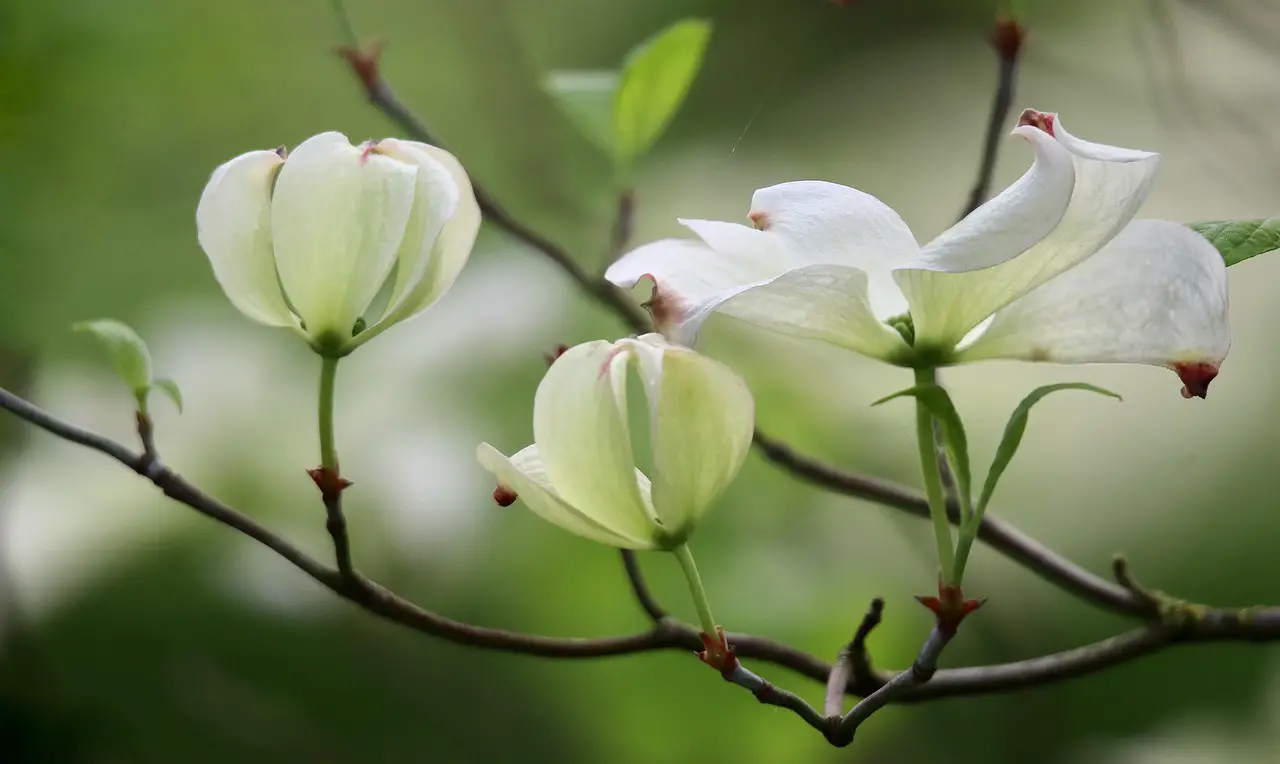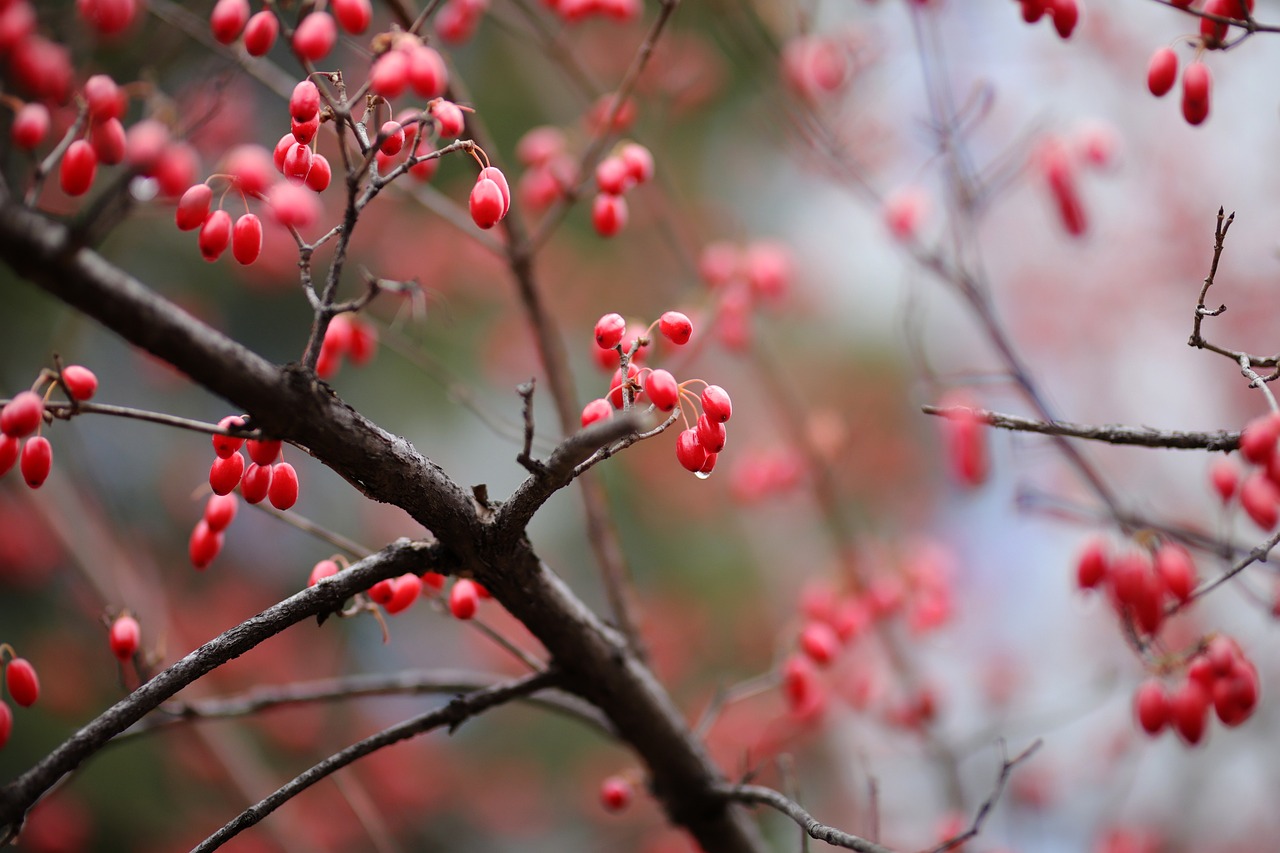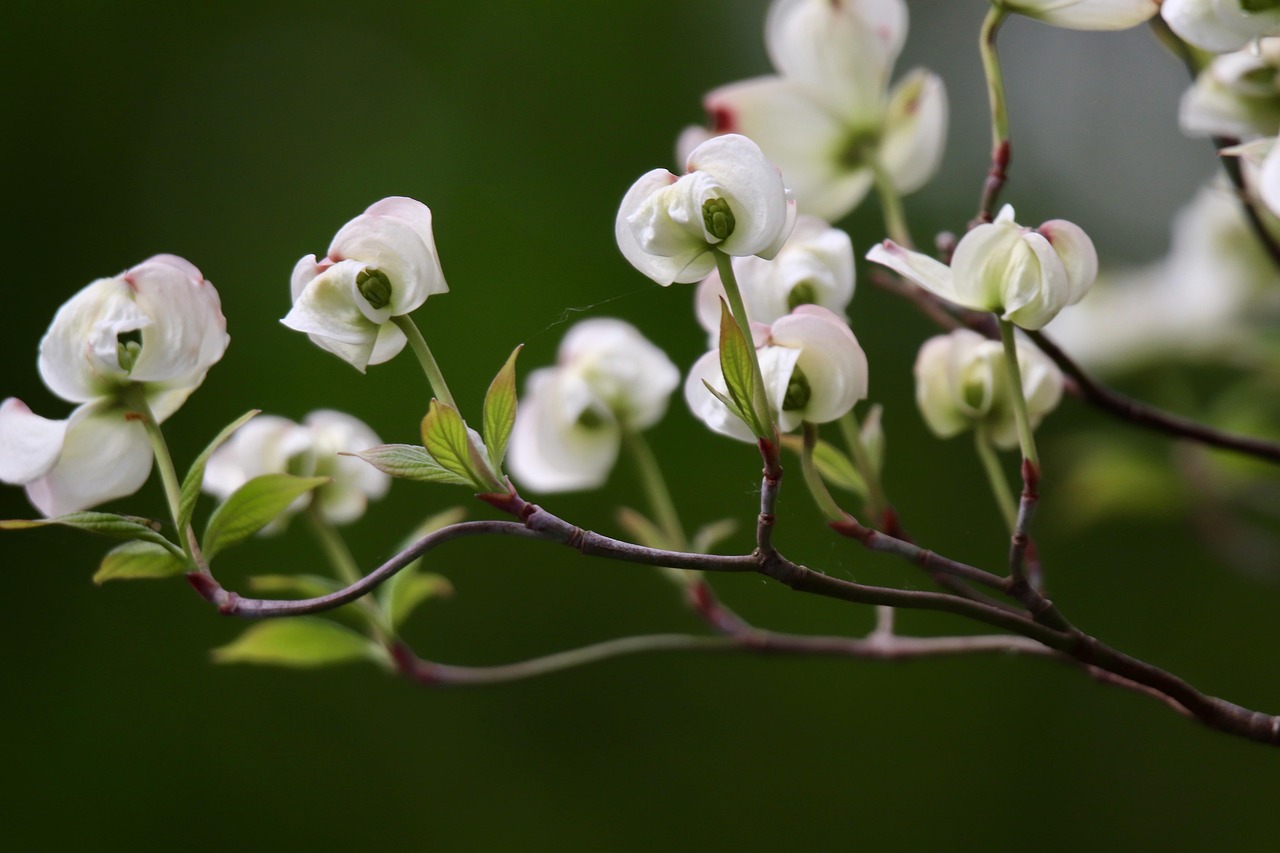Pruning dogwood trees for natural fencing involves selectively trimming branches to encourage healthy growth and a dense, attractive appearance. This process helps enhance the tree’s natural form while creating a living barrier that can provide privacy and wildlife habitat.
Dogwood trees are known for their stunning flowers and vibrant foliage. They are popular choices for landscaping due to their beauty and hardiness. Beyond their aesthetic appeal, dogwoods can be effectively shaped through pruning to serve as natural fencing. This method not only enhances the garden’s aesthetic but also contributes to ecological benefits. The dense branching can provide shelter for birds and other wildlife, making your garden a haven for nature.

Understanding the basic structure and growth patterns of dogwood trees is essential before beginning the pruning process. Dogwoods typically grow as multi-stemmed shrubs or small trees. They can reach heights of 15 to 30 feet, depending on the species. Their branches often extend outward, creating a wide canopy that can be shaped through careful pruning.
Benefits of Pruning Dogwood Trees
Pruning offers several advantages when cultivating dogwood trees for natural fencing purposes. These include:
- Improved Airflow: Proper pruning increases air circulation, reducing the risk of fungal diseases.
- Enhanced Light Penetration: Removing excess branches allows sunlight to reach inner leaves, promoting overall health.
- Increased Aesthetic Appeal: Shaping the tree can create a more organized and visually pleasing look.
- Encouragement of New Growth: Pruning stimulates the growth of new shoots, leading to a denser appearance.
- Wildlife Habitat: A well-pruned dogwood can provide shelter and food for various wildlife species.
When considering using dogwoods as a natural fence, it is important to select the right species for your climate and landscape needs. Below is a table highlighting some common varieties of dogwood trees suitable for natural fencing:

| Species | Height | Growth Habit | Flower Color |
|---|---|---|---|
| Cornus florida (Flowering Dogwood) | 15-30 feet | Multi-stemmed | White or Pink |
| Cornus sericea (Red-osier Dogwood) | 6-9 feet | Shrub | White |
| Cornus kousa (Kousa Dogwood) | 15-30 feet | Small tree | White or Pink |
| Cornus alternifolia (Alternate-leaf Dogwood) | 15-25 feet | Multi-stemmed | White |
The best time to prune dogwood trees depends on the species as well as local climate conditions. Generally, late winter or early spring is ideal before new growth starts. This timing allows you to see the structure of the tree better and make more informed cuts. Additionally, pruning during dormancy minimizes stress on the tree.
Before you begin pruning, gather the necessary tools. A pair of sharp pruning shears is essential for smaller branches, while loppers may be needed for larger ones. Always ensure your tools are clean and sharp to make precise cuts, which will help the tree heal faster and reduce the risk of disease.
Techniques for Pruning Dogwood Trees
When it comes to pruning dogwoods, there are several techniques you can employ to achieve the desired shape and health. Here are some essential techniques:

- Thinning: This involves removing entire branches at their point of origin. Thinning encourages better airflow and light penetration.
- Heading Back: Cutting back a branch to a bud or lateral branch helps control size while promoting new growth.
- Crown Reduction: This technique reduces the height and spread of the tree while maintaining its shape.
- Suckering Control: Remove suckers that grow from the base of the tree to maintain a cleaner appearance.
As you prune, always step back periodically to evaluate your work. This practice helps ensure you are achieving a balanced shape and prevents over-pruning in any one area. Remember that moderation is key; you should aim to remove no more than 25% of the tree’s foliage in one session.
The process of pruning dogwood trees for natural fencing can seem daunting at first. However, with patience and practice, you can master these techniques and enjoy a flourishing landscape feature that enhances both beauty and biodiversity in your garden.
Understanding Dogwood Growth Patterns
To effectively prune dogwood trees for natural fencing, it is crucial to understand their growth patterns. Dogwoods typically exhibit a multi-stemmed growth habit, which can vary based on the species and environmental conditions. Recognizing these patterns will help you make informed decisions about where and how to prune.

Dogwood trees often produce new shoots from their base, known as suckers. These suckers can contribute to the tree’s density but can also lead to overcrowding if not managed properly. The main trunk, or leader, of the dogwood is essential for maintaining overall structure and should be preserved during pruning.
Growth Stages of Dogwood Trees
Dogwood trees go through several growth stages, which influence when and how to prune. Understanding these stages can assist in timing your pruning efforts appropriately:
- Juvenile Stage: In this stage, the tree focuses on establishing roots and basic structure. Minimal pruning is recommended.
- Young Adult Stage: The tree starts to develop a fuller shape. Light pruning can encourage branching and promote healthy growth.
- Mature Stage: The tree reaches its full height and spread. Pruning during this stage focuses on maintenance, shaping, and removing dead or diseased wood.
- Declining Stage: Older trees may show signs of decline. Pruning should focus on rejuvenating the tree and removing hazardous limbs.
Tools Needed for Pruning Dogwood Trees
Having the right tools is essential for effective pruning. Below is a list of tools commonly used in pruning dogwood trees, along with their specific purposes:
- Hand Pruners: Ideal for small branches up to ¾ inch in diameter.
- Loppers: Suitable for larger branches up to 2 inches in diameter. Loppers provide leverage and greater cutting power.
- Saw: A pruning saw is necessary for branches thicker than 2 inches. It allows for clean cuts without damaging the bark.
- Gloves: Protect your hands from sharp tools and thorny branches.
- Disinfectant: Use a solution of bleach or rubbing alcohol to clean your tools before and after use to prevent disease spread.
Before starting your pruning tasks, ensure that all tools are sharp and clean. Dull tools can crush branches rather than cut them cleanly, increasing the risk of disease. Additionally, disinfecting tools is vital when moving between different trees to avoid transferring pathogens.
Pruning Techniques for Different Seasons
The timing of pruning can significantly impact the health and growth of dogwood trees. Different techniques may be more suitable depending on the season. Here’s a breakdown:
Winter Pruning
Winter is often the best time to prune dogwoods because they are dormant. During this period:
- Focus on removing dead or damaged branches.
- Thin out crowded areas to improve air circulation.
- Avoid heavy pruning on flowering dogwoods as they bloom on old wood; excessive cuts may reduce blooms in spring.
Spring Pruning
If you missed winter pruning, spring is another opportunity. However, this should be done cautiously:
- Prune immediately after flowering to maintain the tree’s shape.
- Avoid cutting back too much foliage as it can stress the tree during its active growth phase.
Summer Pruning
Summer pruning can be beneficial for controlling size and promoting bushier growth. This technique includes:
- Removing unwanted suckers as they appear.
- Culling any excessive growth that may detract from the tree’s overall shape.
- Making cuts that encourage lateral growth rather than vertical shoots.
Autumn Pruning
Pruning in fall is generally discouraged for dogwoods since it can interfere with the tree’s preparation for winter. However, light maintenance can be performed if necessary:
- Avoid major cuts that could expose the tree to winter damage.
- Remove any diseased or dead wood that could harbor pests through the winter months.
Signs That Your Dogwood Needs Pruning
Recognizing when a dogwood tree needs pruning is essential for maintaining its health and appearance. Here are some signs to look for:
- Dead or Dying Branches: These can pose risks for falling and should be removed promptly.
- Pests or Diseases: If you notice signs of infestation or disease, pruning affected areas can help prevent further spread.
- Crowded Growth: If branches are crossing each other, it may be time to thin the growth to improve airflow and light penetration.
- Unusual Shape: If your tree appears lopsided or uneven, strategic pruning can help restore balance.
By closely observing your dogwood trees and understanding their growth patterns, you can effectively manage their health through proper pruning techniques. This ongoing care will ensure that your natural fencing remains vibrant and functional throughout the seasons.
Common Pests and Diseases Affecting Dogwood Trees
Understanding the common pests and diseases that can affect dogwood trees is crucial for effective pruning and overall tree health. By identifying these issues early, you can take preventive measures or prune affected areas to maintain the integrity of your natural fencing.
Common Pests
Several pests can harm dogwood trees, leading to weakened structure or reduced vitality. Here are some of the most common pests:
- Dogwood Borer: This insect bores into the tree’s bark and wood, causing significant damage. Look for sawdust-like frass on the ground near the tree.
- Scale Insects: These pests attach themselves to the bark and feed on sap, leading to yellowing leaves and overall decline. They often appear as small, white or brown bumps.
- Spider Mites: These tiny pests thrive in dry conditions and can cause leaf discoloration. You may notice fine webbing on the branches.
- Leaf Spot Fungus: While not an insect, this fungal issue can affect leaves, causing dark spots and premature leaf drop.
Common Diseases
Dogwood trees are also susceptible to various diseases that can impact their health. Recognizing symptoms early can help mitigate damage:
- Cornus Root Rot: Caused by overly wet soil conditions, this disease leads to root decay, resulting in wilting and leaf drop.
- Dogwood Anthracnose: This fungal disease causes brown spots on leaves and can lead to branch dieback. It thrives in cool, damp conditions.
- Powdery Mildew: This fungal disease appears as a white powdery substance on leaves, often occurring in humid conditions.
Preventive Measures for Healthy Dogwoods
Implementing preventive measures is essential for maintaining healthy dogwood trees. Here are some strategies to minimize pest and disease risks:
- Proper Watering: Avoid overwatering your dogwoods. Ensure good drainage to prevent root rot.
- Mulching: Apply organic mulch around the base of the tree. This helps retain moisture and suppress weeds while providing nutrients as it decomposes.
- Regular Inspections: Periodically check your dogwood trees for signs of pests or diseases. Early detection can lead to more effective treatment.
- Pruning Dead Wood: Regularly remove dead or diseased wood to promote air circulation and reduce the risk of disease spread.
- Pesticide Application: If necessary, use environmentally friendly pesticides targeted at specific pests, following all application guidelines.
The Impact of Weather Conditions on Dogwoods
The weather plays a significant role in the health of dogwood trees. Different weather conditions can influence growth patterns and susceptibility to pests and diseases. Understanding these impacts will help you better care for your trees.
Effects of Temperature
Extreme temperatures, both hot and cold, can stress dogwood trees. Here is how temperature affects them:
- Heat Stress: Prolonged high temperatures can lead to leaf scorch and reduced growth. Regular watering and mulching can help alleviate stress.
- Frost Damage: Late spring frosts can damage new buds and flowers, significantly affecting flowering dogwoods. Protecting young trees with coverings during cold snaps can minimize damage.
Impact of Rainfall
The amount and timing of rainfall also significantly affect dogwood trees:
- Excess Rainfall: Extended periods of heavy rain can lead to root rot and other fungal diseases due to waterlogged soil.
- Drought Conditions: Insufficient rainfall can stress trees, leading to wilting and poor growth. In such cases, supplemental watering is crucial.
Choosing the Right Location for Dogwood Trees
The location where you plant your dogwoods significantly influences their health and ability to thrive. Optimal site selection can enhance growth and reduce maintenance needs. Here are factors to consider when choosing a location:
- Sunlight Exposure: Dogwoods prefer partial shade but can tolerate full sun in cooler climates. Assess the sunlight patterns in your garden before planting.
- Soil Quality: Well-draining soil is essential for preventing root rot. Conduct a soil test to determine pH levels and nutrient content.
- Space Requirements: Ensure there is adequate space around each tree for air circulation and growth. Overcrowding can lead to increased disease susceptibility.
Nurturing Dogwoods After Pruning
After pruning your dogwood trees, it’s essential to provide proper care to ensure they recover well. Here are some tips to nurture your trees post-pruning:
- Watering: Keep the soil consistently moist but not soggy. This helps support new growth and reduces stress.
- Nutrient Application: Consider applying a balanced fertilizer in early spring to promote healthy regrowth.
- Avoid Over-Pruning: Limit pruning sessions to avoid stressing the tree. Allow time for recovery between pruning events.
Caring for your dogwood trees with attention to their health, location, and nurturing practices will ensure that they thrive as beautiful natural fencing in your landscape.
Long-Term Care and Maintenance of Dogwood Trees
Beyond the immediate care after pruning, long-term maintenance is vital for keeping dogwood trees healthy and vibrant. Regular attention to their needs will ensure they remain a beautiful and functional part of your landscape for many years. Here are some ongoing care practices to consider:
- Seasonal Inspections: Conduct regular inspections throughout the year to monitor the health of your dogwood trees. Look for signs of pests, diseases, or any structural issues.
- Mulching: Apply fresh mulch annually to suppress weeds, retain moisture, and regulate soil temperature. Organic mulches like wood chips or bark can improve soil quality over time.
- Weed Control: Keep the area around your dogwoods free of weeds. Weeds compete for nutrients and water, which can stress your trees.
- Monitoring Soil Moisture: Use a moisture meter or your finger to check the soil’s moisture level. This will help you determine if watering is necessary, especially during dry spells.
- Pruning Schedule: Establish a routine pruning schedule. Regularly scheduled pruning helps maintain the tree’s shape and health while preventing overcrowding.
Enhancing Biodiversity with Dogwood Trees
Using dogwoods as natural fencing not only beautifies your landscape but also promotes biodiversity. The presence of these trees can attract a variety of wildlife, contributing to a healthier ecosystem. Here are some ways dogwood trees enhance biodiversity:
- Wildlife Habitat: Dogwood trees provide nesting sites for birds, shelter for small mammals, and food sources for various insects.
- Pollinator Support: The flowers of dogwoods attract bees and other pollinators, which are crucial for maintaining a balanced ecosystem.
- Fruit Production: Dogwoods produce berries that serve as a food source for birds and other wildlife, especially in late summer and fall.
Integrating Dogwoods into Landscape Design
When considering dogwoods as natural fencing, think about how they fit into the overall design of your landscape. Here are some tips for integrating dogwoods effectively:
- Layering: Plant dogwoods alongside other shrubs and plants of varying heights to create a lush, layered look that adds depth to your garden.
- Seasonal Interest: Choose different species or varieties that bloom at various times throughout the year for continuous visual interest.
- Color Coordination: Select companion plants that complement the colors of dogwood foliage and flowers to create cohesive garden aesthetics.
- Pathway Borders: Use dogwoods along pathways or borders to create natural fencing that guides visitors through your garden space.
Final Thoughts
Pruning dogwood trees for natural fencing is a rewarding process that contributes to both the beauty of your landscape and the health of local ecosystems. Understanding the unique characteristics and needs of these trees allows you to manage their growth effectively while creating a vibrant living barrier.
The importance of proper pruning techniques cannot be overstated. By monitoring health signs, utilizing appropriate tools, and timing your pruning effectively, you can ensure that your dogwoods thrive. Additionally, integrating these trees into your landscape design enhances not only your property’s aesthetic appeal but also its biodiversity.
As you care for your dogwood trees over the years, remember that patience and attention to detail are key. With dedicated effort, your natural fencing will flourish, providing shelter, beauty, and ecological benefits for generations to come.
Whether you are an experienced gardener or just starting out, using dogwoods as a natural fencing solution will add value to your outdoor space while supporting wildlife. Embrace the journey of nurturing these magnificent trees, and enjoy the many rewards they offer.
